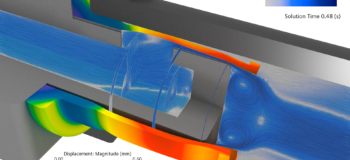Noise cancelation gone too far!
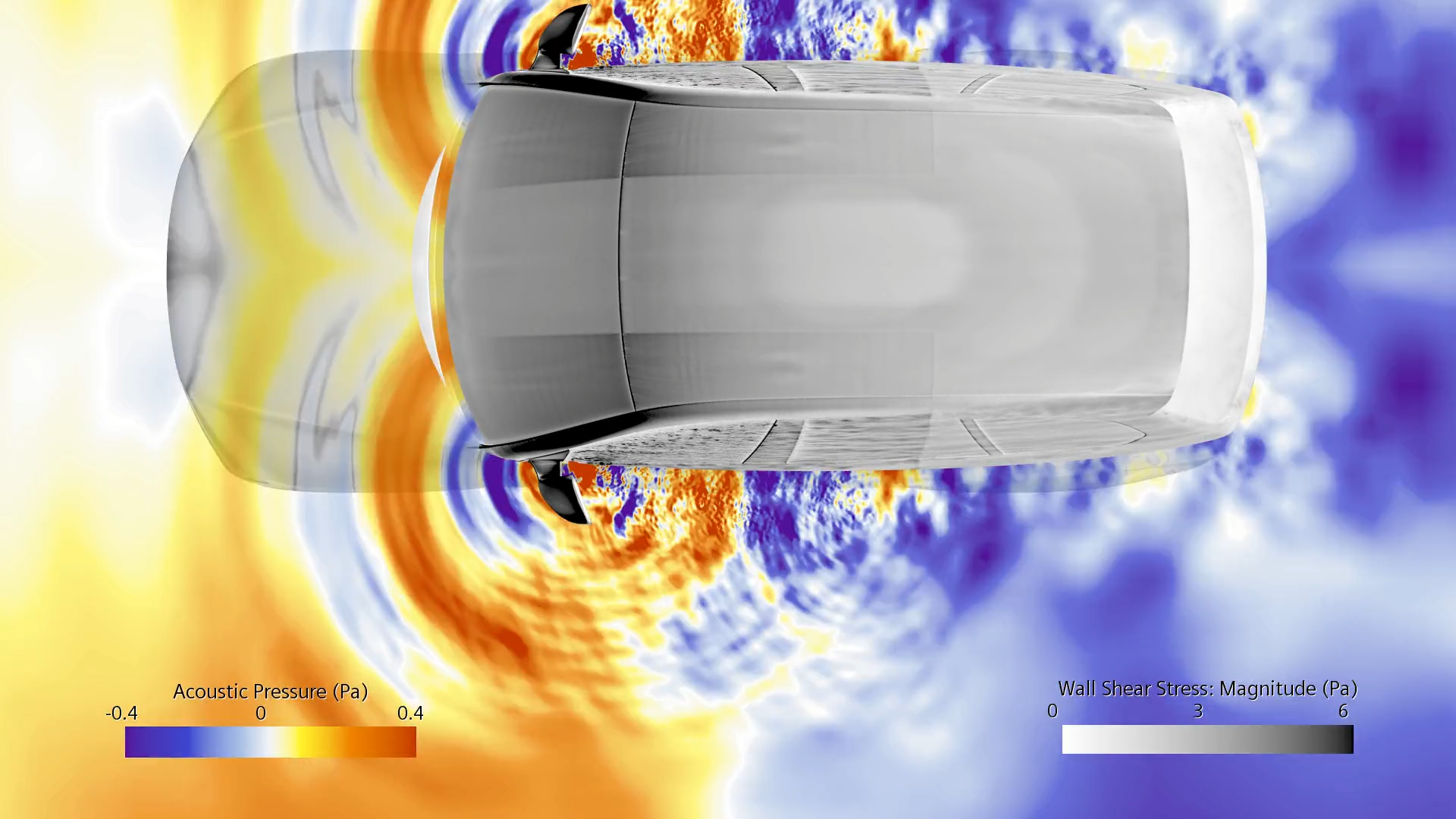
Did you know that only about 25% of consumers consider how noisy a product is as a buying decision? But “many of them come to regret this, and half of such disgruntled shoppers say they would pay as much as 50% extra for a product that makes half as much noise”?
Did you also know that side mirrors are one of the major noise sources of a car? Especially in electric vehicles?
Well, easy I hear you say, why not get rid of those.
New world, new rules, new competitive landscape
Electrification boosts vehicle fleet at becoming quieter
Getting rid of the side-view mirrors is an aggressive but effective solution to the problem of decreasing its induced aeroacoustics sound, especially more prominent in our vehicle fleet becoming quieter through electrification…
Admittedly, I can see us already there… It just takes a side glance at the latest innovations in vehicle design to see a tad of the future on our streets. Some of those designs have something in common… they have no side-view mirrors altogether. Have you ever considered how futuristic such vehicles look just without? In some countries, vehicle legislation is being reviewed to authorize the use of cameras instead of conventional side mirrors.
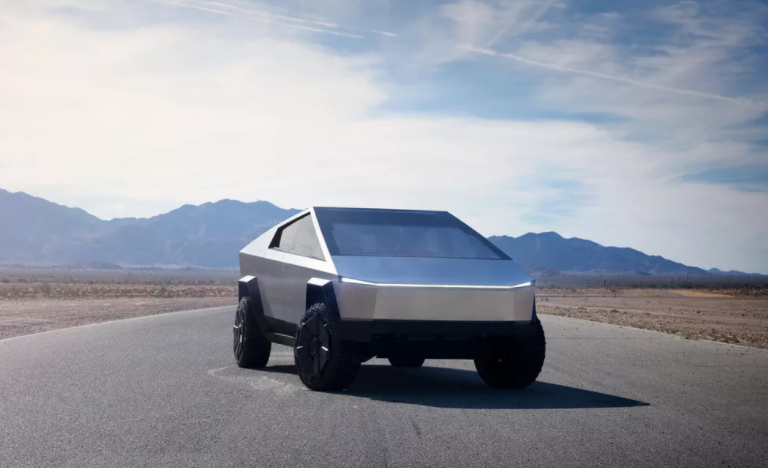
Ensure passenger comfort through side mirrors aeroacoustics CFD improvement
While we all start dreaming now, the reality is this: if you like it or not, despite these first legislative considerations, if you are a car owner or engineer (or both) you will need to cope with side mirrors and related aeroacoustics for some time to come!
And so, it pays to consider aeroacoustics effects in product design for years to come and millions of cars to be sold – and computational aeroacoustics simulations are critical to avoid costly prototypes during the product’s design phase.
Simcenter STAR-CCM+ 2022.1 affirms itself as a partner for design teams in this journey through the release of a new hybrid aeroacoustics offering:
the Perturbed Convective Wave model.
Run faster side mirrors aeroacoustics CFD predictions
Extended hybrid aeroacoustics capabilities
The Perturbed Convective Wave model is inherently faster by design. Hybrid methods solve an additional equation for the sound source based on a source term from the flow. They are much less computationally intense for incompressible simulations than Direct Noise Calculations which solve for the full compressible, unsteady flow field, where the sound field is part of the flow solution.
In addition to being faster simply by being a hybrid approach, this model brings significant performance improvements, compared to the existing Acoustic Wave model for simulations.
In this model, the sound source is relatively close to the receivers, such as for side-view mirrors where the shear layer and turbulent fluctuations caused by the side mirrors are relatively very close to the side-glass and consequently driver and passenger’s ears.
Side mirrors aeroacoustics CFD test on AeroSUV model
The performance improvements of those applications are very noticeable due to the longer computational times required for these simulations. We went on to put to the test the AeroSUV model, developed by FKFS (Forschungsinstitut für Kraftfahrwesen und Fahrzeugmotoren Stuttgart).
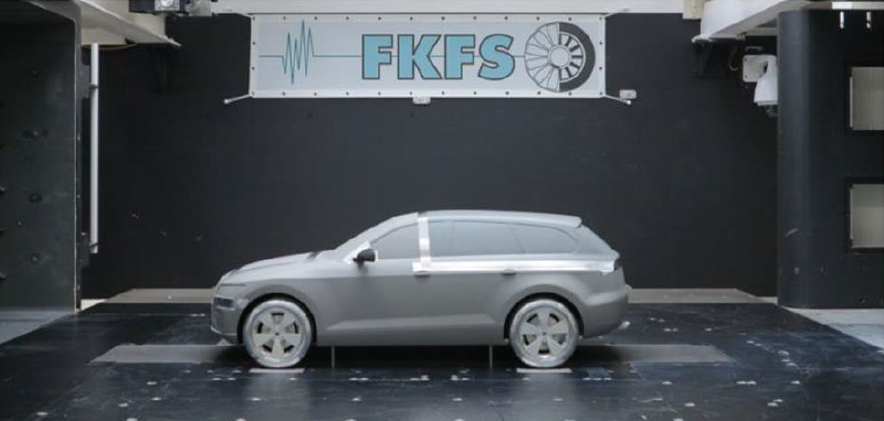
The AeroSUV simulation was virtually instrumented with:
- 6 microphones in the volume
- 19 on the side window
as illustrated below.

Compared to the existing best practice using the Acoustic Wave solver, good results predictions were attained on both the averaged surface sensors and volume microphones for much coarser meshes, up in high frequencies, resulting in an average speedup of 3x.
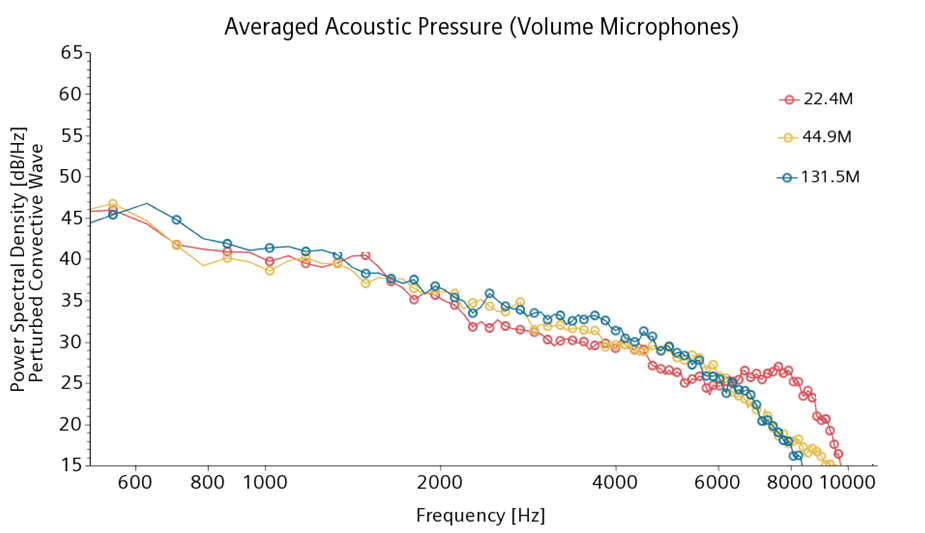
Accurate side mirrors aeroacoustics CFD results, with minimum user effort
Benefit from coarser meshes and larger time-steps
We are excited to introduce to you the Perturbed Convective Wave model because of another fundamental benefit.
Compared to the prior best practice of the Acoustic Wave solver, you will experience a significantly reduced sensitivity to small weaknesses of the mesh and the numerical setup. Often it is not even necessary to damp noise sources if the mesh is coarse. The setup is much simpler hence much faster. It requires much less care about the smallest details, resulting in a much easier preparation of the computational aeroacoustics model.
Integrated and automated workflows
The Perturbed Convective Wave model brings simpler and faster aeroacoustics simulation possibilities with Simcenter STAR-CCM+ 2022.1. Its already part of a wider industrial solution set enabling repeatability, consistency, and a unified workflow for vehicle design teams.
The notion of simulation templates has always been part of the core DNA of Simcenter STAR-CCM+ since its inception. If you’re following this blog closely, you will have noticed that we recently released the ability to create and deploy custom simulation templates more systematically in your organization.

For Simcenter STAR-CCM+ vehicle design departments, a simulation template can drive consistent simulation best practices throughout multiple engineering teams. Weaving in aerodynamics more closely with aeroacoustics, vehicle thermal protection and so on.
Design the next generation of low noise driving experience
Is your head spinning yet about the computational aeroacoustics possibilities this model offers?
I can understand… However just a side note: while this story focuses on side-view mirrors as an application, this model is also the first of our hybrid aeroacoustics model offerings that allow simulation of rotation.
Here for a teaser…
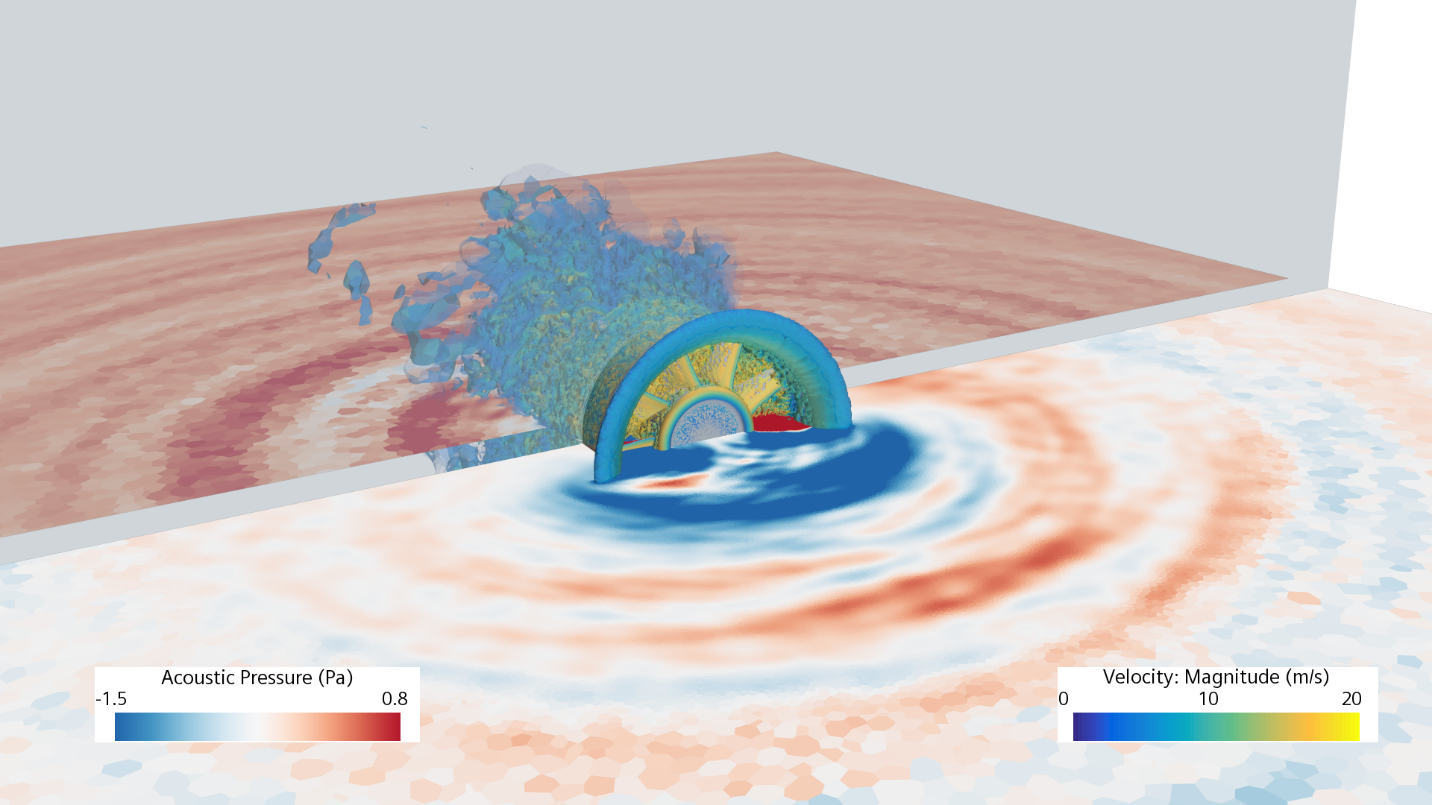
Discover the Lighthill Wave model, designed for distant source noise
In some countries, vehicle legislation is being reviewed to authorize the use of cameras instead of conventional side mirrors. Never mind if this noisy nuisance is now abruptly removed, or significantly smaller, as engineers it won’t be long before we find and optimize the next noisy contributor!
If you feel you’ve heard a similar story from us not too long ago, in Simcenter STAR-CCM+ 2021.3 release we introduced the Lighthill Wave model in Aeroacoustics CFD – crafting the sound of silence for HVAC systems.




